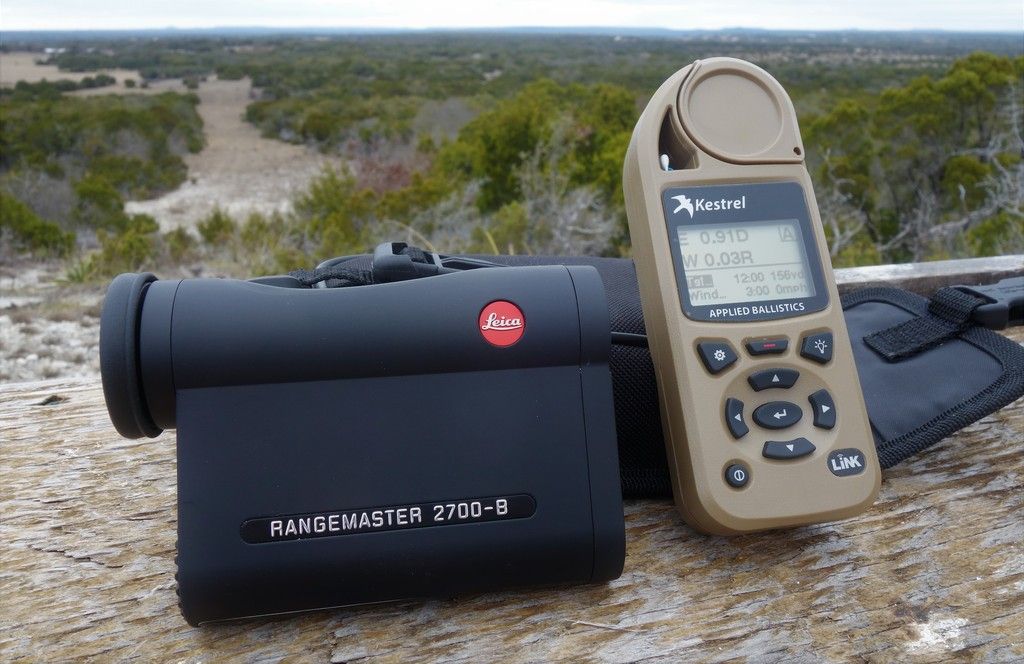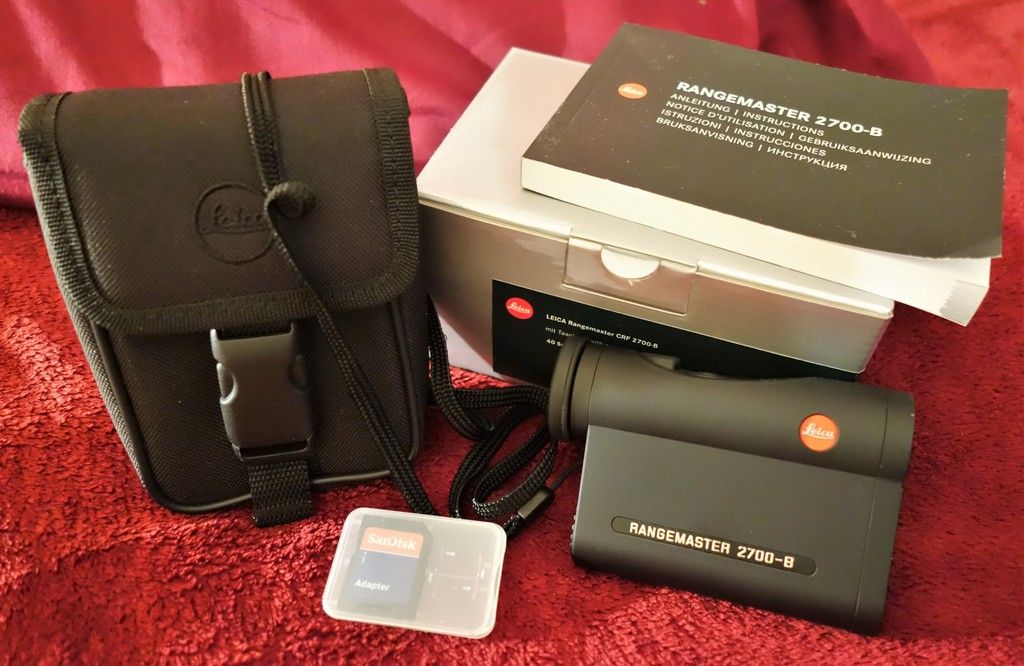Solution Review - Leica 2700b and Kestrel Elite Part I continued
Likewise, when I was able to find game to range at distance, I was not disappointed, though the results were less impressive because finding an open pasture with deer in it at long range was not easily achieved. For a while there, I thought I would have to be satisfied with cows at 1300 for this review. Nonetheless, I did eventually locate a group of small Hill Country does, probably no more than 90 lbs on the hoof, in a field by a highway, the farthest of which was 1290 yards. I was able to repeatedly range the herd that stretched between 1200 and 1290 yards to confirm the distances, and this was under full noonday sun with a fair amount of haze in the atmosphere, and again, no tripod. At 7x, the real challenge was holding steady enough on the tiny deer to range them. I suspect that something the size of an elk or even a mule deer could be acquired at longer distances, especially given a solid rest.
Other targets I ranged included steel plates of various colors from 300 to 1125 yards. In the case of the 1125 yard plates, they were 22 inch targets, while the others were mainly 8-10” plates.
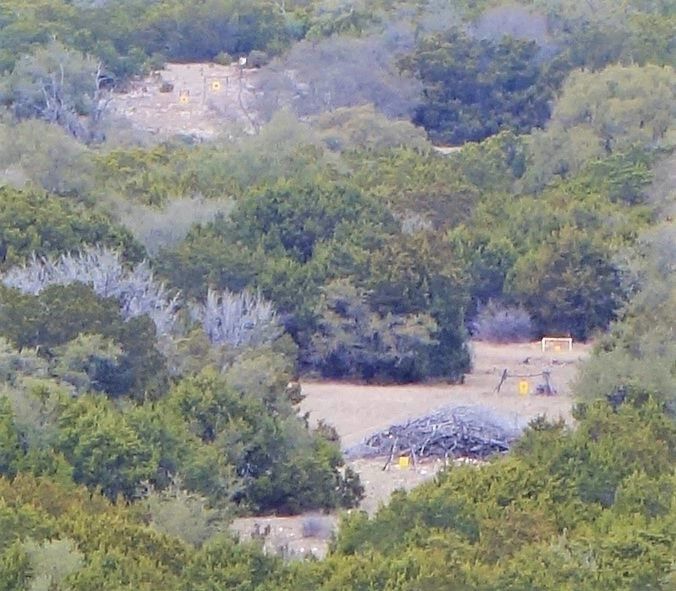 Farthest series of plates. Closest is 700, farthest (top left) are 1115 and 1125 yards
Farthest series of plates. Closest is 700, farthest (top left) are 1115 and 1125 yards
I was also able to repeatedly range a telephone pole that ran through the property that was about 800 yards out. I would have liked to have had 1 MOA plates to range out to a couple thousand yards, but that wasn’t available. Overall, I have no complaints with the ranging on the 2700, it handled difficult conditions very well, and ranged quickly, and consistently.
A couple things to note for those newer to RF’s, conditions really make the difference in ranging, and many manufacturers quote a number for performance under perfect conditions while measuring off a truly reflective surface. We’ve all heard it said, take what they tell you and cut it in half, and that’s what you will get in real life conditions. However, with the two Leica RF’s I have had, both were able to meet their advertised standard even on bright, sunny days, shooting off not so reflective targets like tree foliage. Not that you can hit any tree under full sun on a hazy day out to 2700 yards after having drunk 5 cups of coffee, every time. But given thick foliage and a perpendicular shot, I was able to exceed 2700, even in full sun, on many occasions. Throw over a few clouds or turn the sun down to around sunset, and it becomes easier to do with lesser targets. Add in a rock wall, and ranging becomes easier still. And in the case where you have a truly reflective surface, the 2700 will ring it like a bell, full sun or not. I was easily and consistently able to hit a stop sign and road signs that I estimated to be 18-24 inches square that ranged from 2100-2369 yards (I could see these from a stand while hunting), and this at mid-day in full sun, even with the signs being at oblique angles. The point is, the numbers quoted by different manufacturers are not comparable to each other because of the different testing conditions they use. With the Leicas I have had, I have found that I could achieve the ‘reflective surface, good conditions’ number even on trees in full sun, let alone under ideal conditions, and the 2700 is no different in this regard.
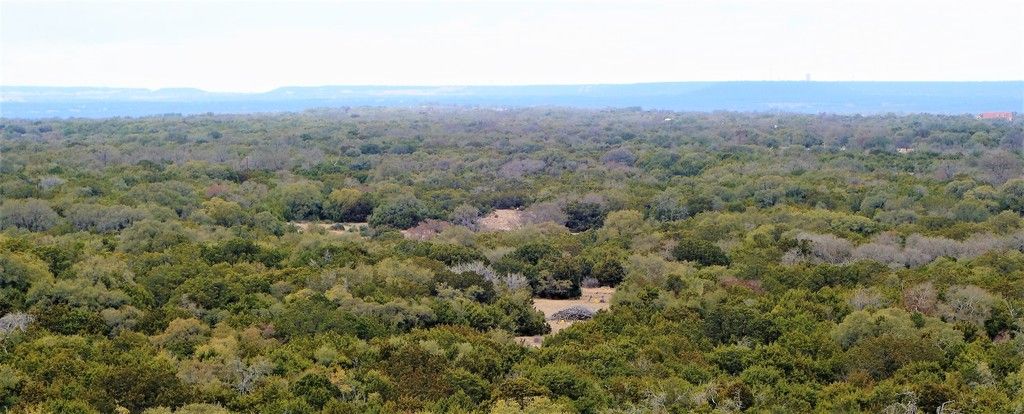 Not a lot of rock faces or ‘reflective’ targets here, so the more power, the better
Not a lot of rock faces or ‘reflective’ targets here, so the more power, the better
The deleterious effect of particular conditions is also one reason I prefer ‘more power than I need’ in my RF. Impressed as I am at the 2700’s ability to hit trees in full sun at 2700+, (though not every time by any means), I am more impressed by how it ranges the 2k targets. These it hits with aplomb, fast and reliably under difficult conditions due to it’s headroom of ranging power. So just as hunters like building the ability to shoot at 1000 yards at steel in order to make the 500 yard shot in the field easier, the extra distance capability makes the shorter shots easier, and allows you to range under worse conditions much more easily and reliably. More power is definitely a good thing, and the 2700 does not lack in that department.
Ballistics
Other than the obvious improvements in ranging performance, Leica also improved their ballistics solution performance vs their previous pocket RF’s. Previous RF’s in this series would allow you to set the RF to display the raw distance and, out to 875 yards, a ballistic output in one of several forms including holds, clicks, mils, MOA, or an equivalent horizontal distance (more on this later).
The ballistic output is based on the readings from the onboard weatherstation that supplies temperature and pressure, as well as the RF’s reading of the shot angle, and the information from the ballistic curve chosen. This last parameter was the main problem for long range shooters because you could not enter your own curve, you had to choose from a list of 12 preloaded curves. Sometimes this worked out okay, but sometimes, as in my case, it did not. And in any case, it is not a terribly precise solution. In my case, when using my 1600b, my load fell almost perfectly between the two closest choices, and the further the distance got, the more my actual curve diverged from both. For shots to 600 yards or so, it worked great, but by the time I reached the maximum of 875 yards, I was off significantly. If you have this problem, with pre-2700 RF’s, the only way around it is to disable the ballistic return entirely and set it to only display the raw range, temperature, pressure, and shot angle, and then enter these into another device for a solution.
The 2700 resolves this problem by adding a micro SD slot on the front of the RF, allowing the shooter to load a custom curve via the included micro SD card. To create and load the curve, you need to go out to Leica’s site and use their software to create the curve and load it as a hex file onto your drive or directly onto your card. You can only load one curve at a time to the card, which limits ballistic outputs to one rifle at a time. Leica explains this as a safety feature to keep people from accidentally using the wrong curve, but I am sure some provision could be made to allow different profiles to be loaded on to one card, rather than having to potentially carry and swap multiple cards around in the field, and that is one improvement I hope they consider in future RF’s.
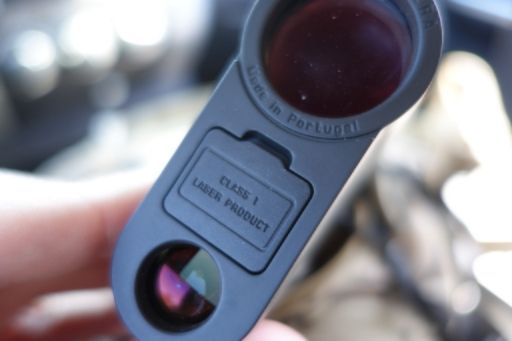
 The SD port is accessed from the front, underneath a rubber seal that allows the 2700 to maintain its IPX7 rating
The SD port is accessed from the front, underneath a rubber seal that allows the 2700 to maintain its IPX7 rating
As an aside, Leica’s ‘EHR’ output (equivalent horizontal range) is similar to other RF displays in that it first displays the actual distance followed by a calculated ‘equivalent’ distance. However, it does not simply apply an appropriate differential to account for an angled shot. Leica RF’s also take into account all of the environmentals as well as your curve, and then output a distance that is equivalent to the distance it would be if that shot had been taken at a 0 degree angle, at 29.92 inches of pressure and 59 degrees F. The purpose of EHR is to allow users to have a custom turret cut for their favorite load with those base environmental conditions specified. Then, wherever they hunt, from sea level to the Himalayas, the RF will take into account the change in conditions to provide an ‘equivalent distance’ that they then dial on their turret. Personally, I cannot see why you would have a turret with distance when MOA or Mil settings work just as well. That said, when using EHR as your output, Leica extends the distance for ballistic returns to 1200 yards. Not sure of the logic on that one, but there it is.
Once you have loaded and activated your curve into the 2700 via the installed card, the RF will now give standard (non EHR) ballistic returns to 1000 yards. The range increase for ballistic returns is ostensibly due to Leica recognizing the increased capability for precision due to the use of a custom curve. However, it is still limited at that range (or close to it, mine actually gives an output to 1010), and Leica again claims this is for safety reasons. There is an argument for this, but I would characterize it as due to limitations in the precision of their ballistic software at this time.
A lot has been said about the weakness of the ballistic solution provided by Leica’s pocket RF’s and with some good reason. Where ranging performance and optics were clean successes for the 2700, ballistic capabilities are a bit of a mixed bag. Before being able to load a custom curve, the limits of precision were decidedly midrange. The custom curve addresses that to a great degree, but the other problem lies in Leica’s ballistic solver solution, both in terms of the software on their site for building curves, and the software in their RF’s. Their solution utilizes strictly G1 BC’s, does not allow inputs for bullet spin direction, length of bullet etc. It does not take into account Coriolis effect, aerodynamic jump, spin drift, nor allow any entry for wind speed or direction. In contrast, the Sig 2400, by utilizing AB’s cutting edge solver, provides a much more robust ballistic capability than do the current Leica offerings.
At one time, what Leica offered was more than sufficient for the average shooter, but the shooting game has changed, and what was once thought of as long range by some shooters is now considered mid range to many. RF’s are no longer tools primarily for hunting, but are also relied on in PRS matches and other target shooting disciplines that stretch shots to distances where additional factors need to be considered. Against AB, the capabilities of Leica’s solution is dated and therefore limited, and it needs refreshed to meet the demands of today’s long range shooters.
But understanding the limitations of their solution explains the limits they place on the provision of a ballistic output. Coriolis and some of the other parameters considered by AB are not so impactful at midrange distances. But as shots break into the long range and ELR distances, the previously ‘small’ effects become very important to consider. As Leica’s solver cannot currently include these factors in a solution, it makes sense that they limit their ballistic output to ranges where their solution accuracy is sufficient which, they judge to be 1000 yards when utilizing a custom curve, 875 when not.
All that being said, even utilizing G1’s, when compared to AB’s outputs, Leica’s solutions were surprisingly accurate as long as Coriolis and ballistic jump were not factors. When tested against my Kestrel 5700 Elite running the AB solver and utilizing a custom drag curve, the ballistic solutions for my load out to 1010 matched remarkably well. In fact, when there was a difference, it was less than .1MOA, and usually much less. Overall, considering what I had read about Leica ballistics, my expectations were considerably lower, and I was surprised and impressed by the 2700’s performance.
Not coincidentally, I found that the pressure readings between the Kestrel and the 2700 were almost identical. The only divergence, one that needs to be addressed when going long, was around temperature. This is an issue that the 2700 is not alone in presenting. In fact, to my knowledge, all shooting weather devices, including the Kestrel, will exhibit temperature drift over time, which effects drops as the distances stretch. The Kestrel gets around this problem by instructing the user to ‘clear the sensor’ by swinging it around on a lanyard to get a true air temperature reading, and then to turn environmental updates to ‘off’, so that the reading is not artificially elevated by the sun or other heat sources. As far as I know, no pocket RF has this capability within the RF, so the longer they are in your hand, close to your body, or in the sun, or if you pull it from a warm truck and then range in the cold, your temperature is going to be wrong, and there is no way to clear this let alone lock in a correct reading. The Sig 2400 will let you lock it in the phone app, but then you have to be using your phone, and you can’t clear it like you can on a Kestrel, so coming from a warm car…you have to just wait, or if it warms up due to sun exposure etc., you have to wait. So effectively, it’s not any different than the Leicas.
Again, while this won’t make much of a difference at mid range, it matters at long range. During some of my testing, temperatures deviated by as much as 10 degrees as I sat in the sun holding the RF, or set the Kestrel, unlocked, on my truck. With the Kestrel, a quick clear and lock took me back to the initial reading, but there was nothing I could do to bring the Leica down but put it in it’s case and wait it out. This is something I’ll cover more when looking at the ‘system’ of a Kestrel and the 2700, but to me, it is a factor that recommends a two-device solution (a Kestrel and something else) rather than an ‘all in one’, at least until RF makers implement a way to clear, stabilize and lock temperature as Kestrel has done.
Overall, I have to say that while the ballistic capabilities are not on the same level as the ranging and optical performance, the ballistics on the 2700 are really quite good, much better than I was led to believe. If you recognize the limitations of the ballistic system in the 2700, I find it to be a sufficient answer for when you need a fast ballistic solution for mid-range distances. It tracks almost exactly with the AB solver all the way to it’s 1000 yard limit (with the afore mentioned caveats), and, for most hunting uses in conditions where a fast solution is needed, it is absolutely up to the task for as far as
most hunters will be shooting at game. Beyond those distances, that’s where the Kestrel with AB steps in.

